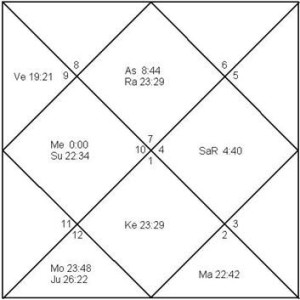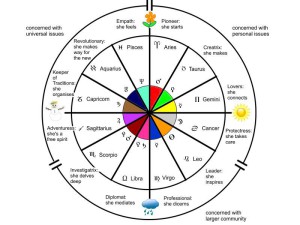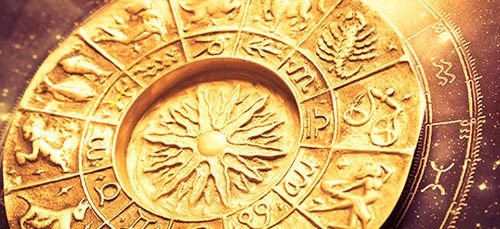No products in the cart.
What is Hindu Vedic Astrology?
The Hindu Vedic astrology is a popular form of astrology that is followed by the rank and file of India to get a glimpse of their future. To be specific and scientific, Hindu Vedic astrology is a science that allows an individual to determine what future has in store for him/her. It is a spiritual dimension of Science that focuses on the personality of an individual to make intelligent predictions. More often than not, many believe that Hindu Vedic astrology empowers a forthright individual to stay on right track that entails ‘karma’. Everything is in the palms of ‘karma.’ A new beginning awaits those who seek integrity and righteousness. Karma is deemed analogous to fortune that keeps constantly fluctuating. The sooner an individual realizes this concept in the profoundest sense, the better is his/her future. Life has a lot of uncertainties and hence people are anxious to identify these uncertainties. To look at the brighter side of life, ‘Hindu Vedic astrology’ assists an individual and further prompts to get down to his/her dashing best. To make headway in life and add an extra jazz of surprise of looking at the brighter side of life, brace ‘Hindu Vedic astrology.’ At a time when the supreme technology of the world rules the roost, a tug of war between desires and obligations may overwhelm our usual objectivity and good sense. In addition, many other problems may weigh on our minds. To iron out these adversities, Hindu Vedic astrology comes to our rescue. Astrologers emphasize on few insightful signs and advice individuals to make a resolution for themselves to embark on a cautious journey. They persuade the individuals to look for signs around them and influence them to be receptive to these signs. Being receptive to these signals is absolutely important. Professional and knowledgeable astrologers have the flair of determining the ‘what is in his/her offing’ concerns. To appreciate the essence of life and garner compliments, one must realize this eventual gospel truth- ‘Blood is thicker than water.’ Thanks to the cosmos clearing up, people feel accomplished a great deal and stay alert after espousing the gospel truth. Astrology, to be precise, ‘Hindu Vedic astrology’ accentuates this aphorism-
‘You are not born a winner. You are not born a looser. You are born a chooser. Life is a journey laced with joyous landmarks and a tinge of sadness. Things mellow out soon. No wonder, if you feel like you are stuck in a rut. Your energy levels and enthusiasm may have gone for a toss due to the mundane routine. However, remember and recognize with unfathomed spirit that there shall be something on the cards that can cheer you up. Flaunt your unique style and stay vibrant, focused and determined.’
The traditional Hindu system of astrology is Jyotisha. Hindu Vedic astrology is the English equivalent of our idolized Jyotisha. Vedic astrology entered English lexicon in the latter half of 19th century. Vedanga Jyotisha is one of our earliest texts on astrology. To all intents and purposes,
Jyotisha is Categorized Into Three Parts
- Siddhanta
- Samhita
- Hora
Siddhanta Jyotisha
Siddhanta Jyotisha determines the positions of the planets and other heavenly bodies. It assists professional astrologers in predicting the impact of stars, planets and other heavenly bodies on individuals’ lives. Our renowned Hindu calendar Panchang took tremendous strides from this theory. Bhaskaracharya, the celebrated ancient mathematician, authored two treatises named Surya Siddhanta and Siddhanta Siromani. These two masterpieces on astronomy delve deep into the intricacies of Hindu Vedic astronomy and provide valuable insights.
Samhita Jyotisha
Samhita provides valuable information about everyday phenomena. In a nutshell, it may be deemed ‘quotidian astrology.’ It is an umbrella term encompassing the aspects of predicting the important events related to life, wars, earthquakes, cyclones, disasters, political events, stock market predictions, shares and financial acumen, house and business premonitions, animals, omens etc. To be the herald and usher in new vigor, the couple who are ready to witness a glimmer of hope in their lives seek the help of an astrologer who has supreme expertise in Samhita. He uses his experience, knowledge and acumen to calculate Shubha Muhurta or auspicious time for wedding.

Hora
Hora is commonly known to people as Jataka. It is a fortune telling astrology that determines the recipe of success in a person’s life by diligently observing his/her birth chart. The birth chart is also called Janma Kundali. Many a time, astrologer can determine the education, wealth, health, marriage, children and other aspects of the individual. He emphasizes the necessity to capitulate on big moments of life. Comprehending the fine line between the influence of planets and influence of stars makes this Hora an intriguing component of Hindu Vedic astrology.
There is a set of six auxiliary disciplines used to support Vedic rituals. The term that is used to lay emphasis on these auxiliary disciplines is Vedanga. Jyotiṣa is one of these six auxiliary disciplines. By using the profound concepts of jyotiṣa, many astrologers draft the calendars and fix the date of sacrificial rituals. It is quite interesting to notice that nothing is written about planets initially i.e., in the first draft. However, there are mentions of eclipse causing “demons” in the Atharvaveda and Chandogya Upanishad. For instance, the Chandogya Upanishad mentions Rahu. In addition, the term graha, which is now deemed to mean planet, originally meant demon. The Rigveda also mentions an eclipse causing demon, Svarbhanu, however the specific term of “graha” becomes applied to Svarbhanu in the later celebrated epics-Mahabharata and Ramayana.
The cornerstone of Hindu Vedic astrology is the premise of bandhu of the Vedas, or scriptures. There lies a vital nexus between the microcosm and the macrocosm. Hindu Vedic astrology fundamentally relies on mirroring the macrocosm by focusing on the propositions of microcosm. Microcosm encapsulates the characteristics of eternal universe in a miniature model. On the contrary, Macrocosm encapsulates the characteristics of eternal universe and represents it without any fine tuning. Comprehending the fine line between the principles of sidereal zodiac and tropical zodiac is admirable. To be pragmatic, practice relies essentially on the principles of sidereal zodiac, which is dissimilar to the principles of tropical zodiac that are used and followed in Western astrology. Western astrology is also called Hellenist astrology. Hindu Vedic astrology is a stead-fast tool that includes several nuanced sub-systems of interpretation and prediction with elements not found in Hellenistic astrology, such as its system of lunar mansions (Nakṣatra). It was only after the transmission of Hellenistic astrology that the order of planets in India was fixed in that order of the seven-day week.
Spiritual scientists adhere to the principles and propositions of astrology. They confirmed that heavens and other celestial worlds are a token of macrocosm to our own physical being. In brief, universe mirrors our humanness and vice-versa. Paying immense attention to this point, it becomes imperative to quote the wise words of Hermes Trismegistus: “That which is below is like that which is above, that which is above is like that which is below. The entities bear a strong resemblance only to deal in miracles that define our very existence.” If we return to our understanding of the universe as a larger world (macrocosm) identically reflecting humankind as a smaller world (microcosm) and vice versa, we begin to realize that knowing about astrology is more than just memorizing the zodiac sign dates, or zodiac houses. There is something more than this astrology meets to our eyes. We owe it to ourselves to learn more about astrology because it opens up vast new perspectives for us. It also gives us an incredibly efficient and colorful strategy for living life with profound awareness.

Hellenistic astrology and astronomy also transmitted the twelve zodiacal signs beginning with Aries and the twelve astrological places beginning with the ascendant. The first evidence of the introduction of Greek astrology to India is the Yavanajataka which dates to the early centuries CE. The Yavanajataka (“Sayings of the Greeks”) was translated from Greek to Sanskrit by Yavanesvara during the 2nd century CE, under the patronage of the Western Satrap Saka king Rudradaman I, and is considered the first Indian astrological treatise in the Sanskrit language. However the only version that survives is the later verse version of Sphujidhvaja which dates to AD 270. The first Indian astronomical text to define the weekday was the Aryabhaṭiya of Aryabhaṭa (born AD 476).
The popular term horoscope is a mélange of ‘hour’ and ‘instrument for viewing.’ It is coined thusly because through the skies we are able to gain insights (view) into our lives by determining the activities of the heavens at the hour of our birth. The term zodiac is Greek counterpart of “animal.” The ancient Greeks improvised the principles of the amazing art of astrology by dividing the heavens into 12 groups known as constellations. Each of these groups is named after a personification (zodiac) that essentially correlates with the nature of each constellation.
Astrology is not a ‘pseudo-science’ but a ‘spiritual science’.
![]()
Free Astrology Reports and Charts






